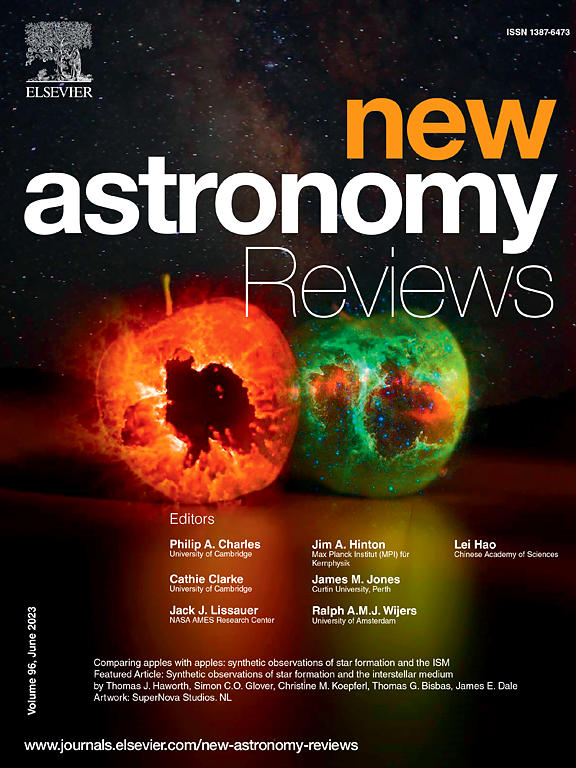是什么推动了黑洞的增长:十年的进步
IF 26.8
2区 物理与天体物理
Q1 ASTRONOMY & ASTROPHYSICS
引用次数: 0
摘要
在过去的十年里,我们对超大质量黑洞(SMBHs)的理解取得了重大进展。现在很清楚,活动星系核(AGN:观测到的不断增长的SMBH的表现)是一个星系更广泛生命周期内的一个“事件”,它可以显著影响星系本身的形状和演化。我们对影响AGN观测属性的模糊介质的看法也经历了一场革命,我们现在对SMBH的燃料(和反馈)与更广泛的宿主星系和更大尺度环境之间的联系有了更多的物理理解。我们对SMBH吸积的物理学有了更深入的了解,可以识别出z= 8-10的AGN,见证了SMBH成长的最早阶段,并且对AGN活动有了比以往任何时候都更完整的普查。这一重大进展得益于新的创新设施、不断增加的多波长数据量、新技术的开发和发展,以及更广泛的社区参与。在本文中,我们回顾了我们对agn和SMBHs生长的理解,提供了早期Alexander和Hickox(2012)综述的更新。通过引用网络分析,我们还展示了这篇综述在更广泛的黑洞研究文献中的位置,并采用前一篇文章作为十多年前该领域的快照,确定了推动最大科学进步的驱动因素。本文章由计算机程序翻译,如有差异,请以英文原文为准。
What drives the growth of black holes: A decade of progress
The last decade has witnessed significant progress in our understanding of the growth of super-massive black holes (SMBHs). It is now clear that an Active Galactic Nucleus (AGN: the observed manifestation of a growing SMBH) is an “event” within the broader lifecycle of a galaxy, which can significantly influence the shape and evolution of the galaxy itself. Our view of the obscuring medium that affects the observed properties of an AGN has also undergone a revolution, and we now have a more physical understanding of the connection between the fuelling of (and feedback from) the SMBH and the broader host-galaxy and larger-scale environment. We have a greater understanding of the physics of SMBH accretion, can identify AGNs out to 8–10 witnessing the very earliest phases of SMBH growth, and have a more complete census of AGN activity than ever before. This great progress has been enabled by new innovative facilities, an ever-increasing quantity of multi-wavelength data, the exploitation and development of new techniques, and greater community-wide engagement. In this article we review our understanding of AGNs and the growth of SMBHs, providing an update of the earlier Alexander and Hickox (2012) review. Using citation-network analyses we also show where this review fits within the broader black-hole research literature and, adopting the previous article as a snapshot of the field over a decade ago, identify the drivers that have enabled the greatest scientific progress.
求助全文
通过发布文献求助,成功后即可免费获取论文全文。
去求助
来源期刊

New Astronomy Reviews
地学天文-天文与天体物理
CiteScore
18.60
自引率
1.70%
发文量
7
审稿时长
11.3 weeks
期刊介绍:
New Astronomy Reviews publishes review articles in all fields of astronomy and astrophysics: theoretical, observational and instrumental. This international review journal is written for a broad audience of professional astronomers and astrophysicists.
The journal covers solar physics, planetary systems, stellar, galactic and extra-galactic astronomy and astrophysics, as well as cosmology. New Astronomy Reviews is also open for proposals covering interdisciplinary and emerging topics such as astrobiology, astroparticle physics, and astrochemistry.
 求助内容:
求助内容: 应助结果提醒方式:
应助结果提醒方式:


